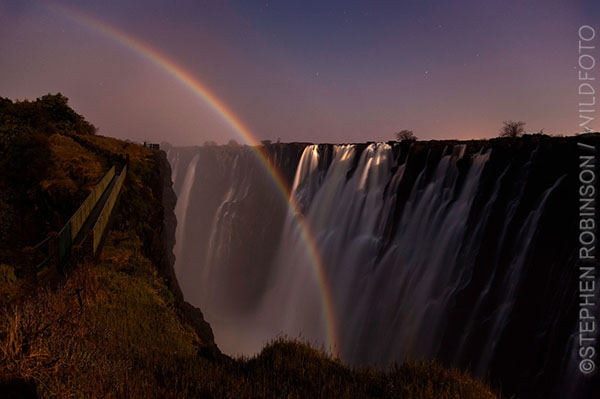Lunar rainbows, sometimes known as "moonbows" or "white rainbows", are rare and hence difficult to photograph. Light reflected from the Moon is of a comparatively low intensity, so the best opportunities occur when the Moon is at its brightest - ie fully illuminated. Rain, water droplets or moisture must be present in the atmosphere opposite the Moon (ie 180 degrees of azimuth from the Moon), and the elevation of the Moon above the horizon must be less that 42 degrees. Note that a halo or circle of light seen around the Moon is not a lunar rainbow.
 |
| Lunar Rainbow at Victoria Falls. Image by kind permission of Stephen Robinson/Wildfoto. |
A dark sky is obviously preferable because a low-intensity rainbow is then easier to discern. The low-intensity nature of the phenomenon generally makes the colours of the spectrum difficult to distinguish. Indeed, "moonbows" may be seen as vague arcs of white light because the colour receptors of the human eye may be unable to separate the different wavelengths.
The image above, taken at Victoria Falls. The exposure was 35 seconds at f/5, using an ISO setting of 800.






